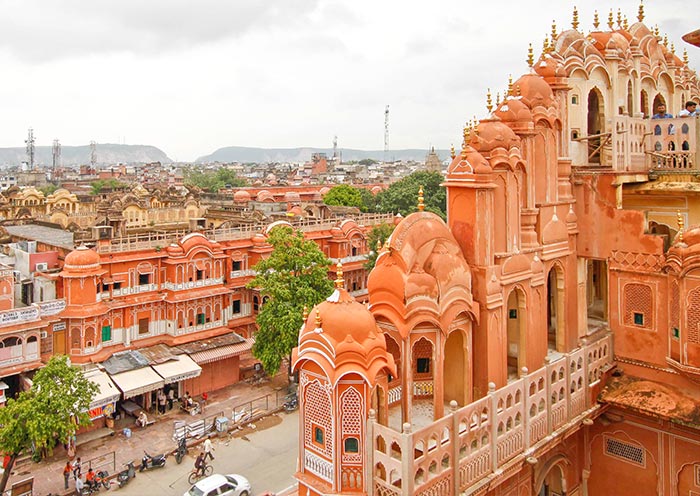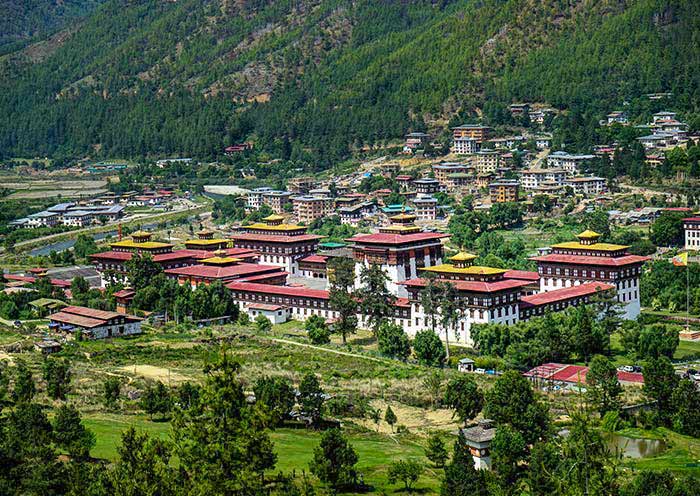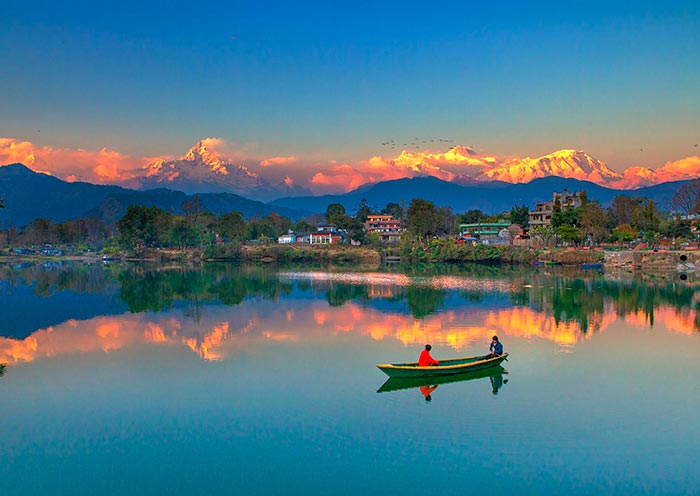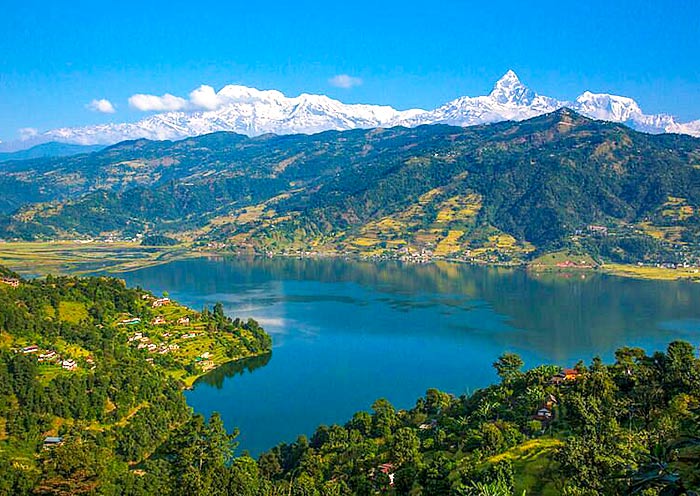- Highlights
- Itinerary
- Price
- Trip Notes
- Accommodation
- Photos
- Reviews
This itinerary for the 12-Day India Nepal Tour (Delhi Agra Jaipur Udaipur Kathmandu Nagarkot) offers a comprehensive and enriching travel experience that beautifully combines the architectural wonders and cultural heritage of India with the natural beauty and spiritual essence of Nepal.
You'll start in Delhi, a capital city where ancient history and modernity converge, seeing all the top sights of the old and new city, followed by a jaunt down to Agra, which is home to the iconic Taj Maha, witnessing the sunrise over this epitome of love. From there it's on to Jaipur to experience the pink city’s stunning forts, exquisite architecture, and vibrant markets before heading to Udaipur, the Venice of the East, with its romantic lake and gorgeous whitewashed palaces.
After soaking in the regal heritage of India, the tour takes an exciting turn towards Nepal. Visit Kathmandu Valley, home to 7 world heritage sites. You'll find yourself amidst ancient temples centuries-old historic Durbar Squares and hidden backstreet shrines. A trip to Nagarkot, which offers breathtaking views of the Himalayas, provides a perfect backdrop for sunrise or sunset views.
Travelers with a keen interest in the rich tapestries of culture, history, and architecture will find this tour incredibly rewarding. With a mix of architectural wonders, vibrant street scenes, stunning Himalayan views, and the serene Lake Pichola, this tour offers endless opportunities to capture the essence of India and Nepal through the lens.


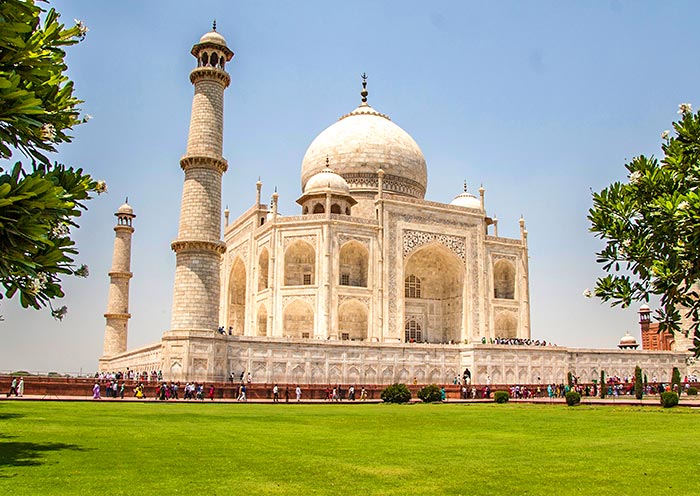
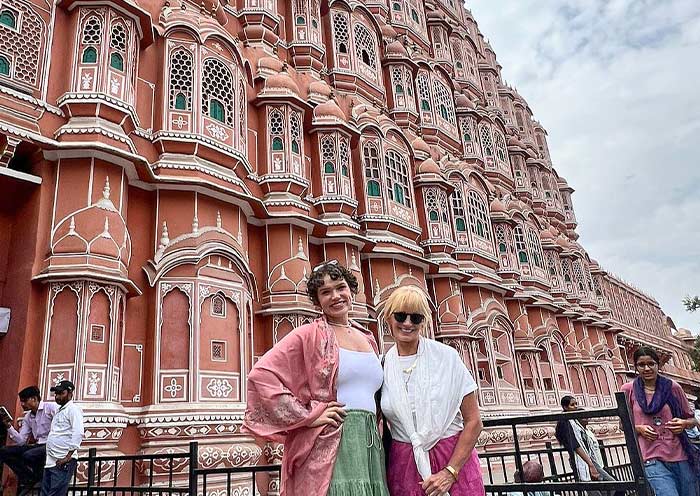


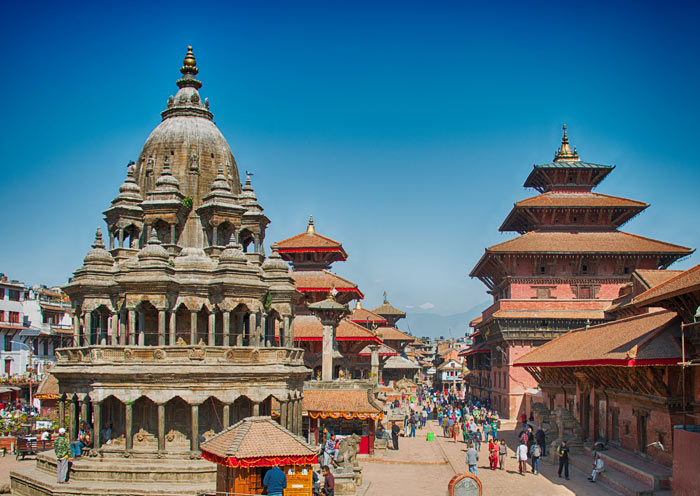

Itinerary at a Glance
Delhi (2 Days)
Jama Masjid, Chandni Chowk, India Gate, Qutub Minar, Humayun's Tomb, Red Fort (outside view)
Agra (2 Days)
Mehtab Bagh, Taj Mahal, Agra Fort, Itmad-ud-Daula's Tomb, Fatehpur Sikri
Jaipur (2 Days)
Amber Fort, City Palace, Jantar Mantar, Hawa Mahal
Delhi (1 Day)
Airport Transfer
Kathmandu (3 Days)
Kathmandu Durbar Square, Swayambhunath Stupa, Pashupatinath Temple, Boudhanath Stupa, Patan Durbar Square, Bhaktapur Durbar Square, Changu Narayan Temple
Nagarkot (1 Day)
Himalayan View Tower
Kathmandu (1 Day)
Airport Transfer
Itinerary Day by Day
Welcome to Delhi, the capital city of India! When you arrive at Indira Gandhi International Airport, our local professional guide and driver will pick you up and escort you to the downtown area. After checking in at your hotel, you can relax and decompress from your long flight for the rest of the day.
Delhi is a fascinating metropolis that seamlessly blends the old with the new. Divided into two distinct parts - Old Delhi and New Delhi - the city offers a captivating journey through time, where ancient traditions coexist with modern developments.
Arrival Ideas:
1. Flights to Delhi: Travelers can take international flights to Indira Gandhi International Airport from major cities in Europe (London, Paris, Frankfurt, Amsterdam, Rome), the Middle East (Dubai, Doha, Abu Dhabi), North America (New York, Toronto, Los Angeles), and Asia (Kathmandu, Singapore, Phuket, Istanbul, Kuala Lumpur, Kuwait, Bangkok, Colombo). India domestic flights connect New Delhi with Varanasi (1h 20m), Udaipur (1h 25m), Mumbai (2h), Amritsar (1h 20m), and other destinations.
2. Delhi Airport Transportation: Delhi Airport is located in Palam, about 18km southwest of central Delhi. The airport is well-connected to the city center, with a typical travel time of 30 to 45 minutes by car.
Free Time Ideas (Optional): Red Fort Sound and Light Show (Jai Hind, Evening Show of 60 min)
With a seating arrangement of 700 people for a single viewing, this spectacular evening show brings the history of the Red Fort (World Heritage) and Delhi to life in a fun and engaging way! (Tips: Closed on Mondays. Make sure to book your tickets in advance. Show timings: 6:30 - 7:30 pm in Hindi; 8:15 - 9:15 pm in English).
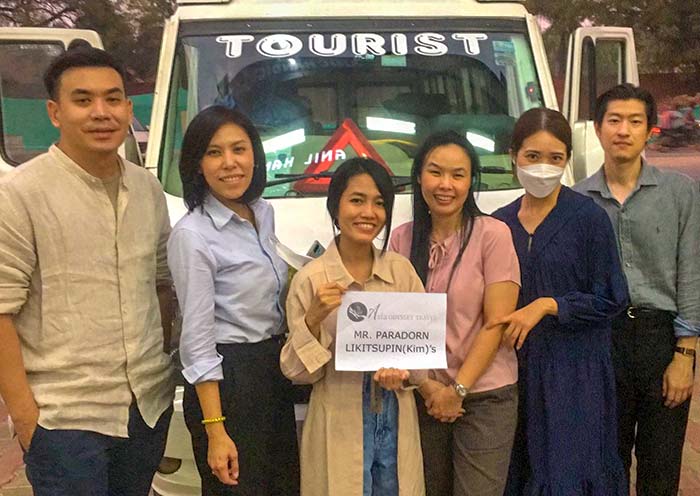
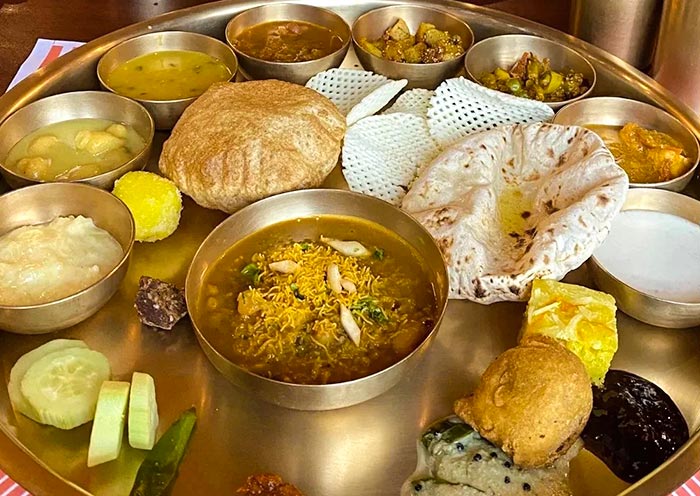


Get ready for an extraordinary adventure in Delhi! Today, you’ll embark on a unique time travel tour, journeying from the majestic Old Delhi steeped in history, all the way to the modern marvels of New Delhi. This exciting exploration will weave together the vibrant tapestry of Delhi, allowing you to witness the city's ancient grandeur seamlessly blend with its contemporary flair.
Your exploration begins in the heart of Old Delhi, where you'll visit Jama Masjid, one of India's largest and most awe-inspiring mosques. Construction began in 1644 under the reign of the Mughal emperor Shah Jahan, the same visionary who brought us the Taj Mahal. This magnificent structure, also known as Masjid-i-Jahan Numa (meaning "mosque commanding the view of the world"), is crafted from red sandstone and adorned with beautiful white marble. Step back into the 17th century and stand in awe under the towering minarets of Jama Masjid. Feel the spiritual energy resonate through time and imagine the grandeur of the Mughal era as the call to prayer echoes through the centuries.
Later, take a stroll to Chandni Chowk, one of the oldest and busiest markets in Old Delhi. Also established by the Shah Jahan in the 17th century, this market is a maze of narrow alleyways filled with small shops offering delectable snacks, sweets, and savories, as well as budget-friendly deals on clothing and other items. Chandni Chowk stretches from the iconic Red Fort to the historic Fatehpuri Masjid, covering a significant distance. To fully immerse yourself in the charm of Old Delhi, we recommend taking an optional rickshaw tour around Chandni Chowk.
Don't miss the opportunity to pass by the Red Fort (World Heritage) and marvel at its symbol of grandeur. Known as Lal Qila and built by the Shah Jahan, the fort serves as the main residence for the Mughal emperors of India and is recognized as a significant architectural masterpiece.
After that, make your way to New Delhi and explore the iconic India Gate. This magnificent memorial is dedicated to the Indian soldiers of World War I. Resembling the Arc de Triomphe in Paris, India Gate stands as a prominent landmark, symbolizing an important chapter in India's history.
As you move forward, you'll have the opportunity to witness the transformation of Delhi into a thriving modern metropolis while also having a chance to take photos of several notable landmarks, including the Rashtrapati Bhavan (Presidential Residence), Parliament House, North Block, and South Block.
Then, you will arrive at Qutub Minar, a UNESCO World Heritage Site and the tallest brick minaret in the world. Standing proudly at an astonishing height of 72.5 meters (238 feet), the Qutub Minar showcases the exquisite craftsmanship of Indo-Islamic architecture. Prepare to be enthralled by the sheer magnificence of this historical masterpiece as you delve into its rich and fascinating history that dates back to the 12th century.
Finally, visit Humayun's Tomb, another jewel in Delhi's crown and a UNESCO World Heritage Site. It holds the distinction of being the first significant example of a Mughal garden tomb. Its breathtaking design and captivating blend of Persian and Indian architectural styles even served as inspiration for the future wonder of the world, the Taj Mahal! Adorned with intricate marble inlays and surrounded by Char Bagh gardens, this red sandstone monument stands as an iconic symbol of Mughal architecture. Stroll through the paradise garden, marvel at the architectural grandeur, and immerse yourself in the captivating love story it holds.
After this amazing tour, you’ll head back your hotel.
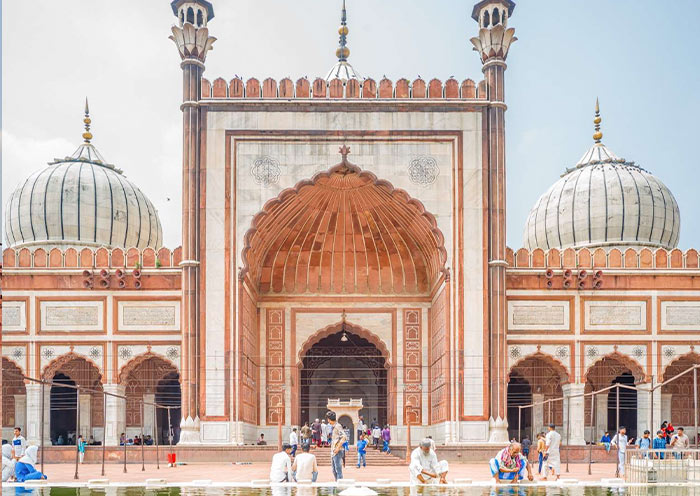

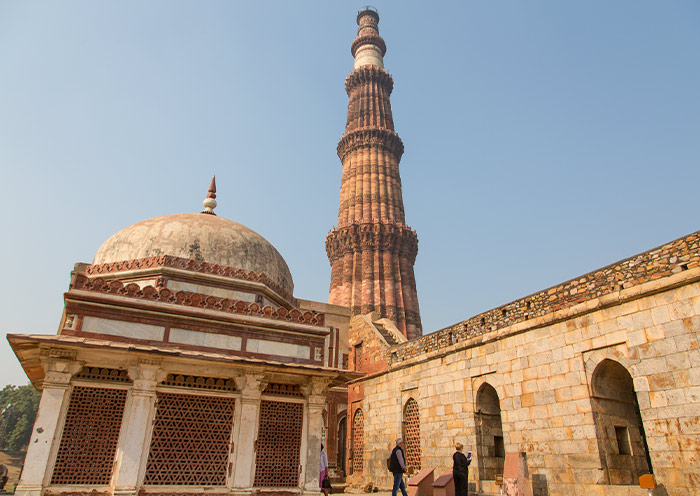

Start your day with a tasty breakfast at your hotel in Delhi and bid farewell to the capital of India in the morning. Head off to Agra, a journey of approximately 250km (155miles) that takes about 4.5 hours, depending on traffic conditions.
The primary route for travel between Delhi and Agra is the Yamuna Expressway. It is known for its well-maintained surface and infrastructure. With our selected vehicle, that's a comfy road trip guaranteed. And it's a scenic road trip as well! Witness the captivating transformation as Delhi's urban sprawl transitions into picturesque landscapes, flyover bridges right over lush green fields, and vibrant agricultural farms painting the landscape. So don't hesitate to ask for a pit stop to capture the essence of the journey with your camera!
Upon arrival in Agra, you can visit Mehtab Bagh for an amazing sunset view. Known as the "Moonlight Garden", Mehtab Bagh is a 16th-century Mughal-era garden that offers a unique perspective of the Taj Mahal, especially during sunset. Watch the iconic Taj Mahal's silhouette reflecting over the calm Yamuna River, creating a truly magical scene. It's a perfect sneak peek preview of the Taj Mahal.
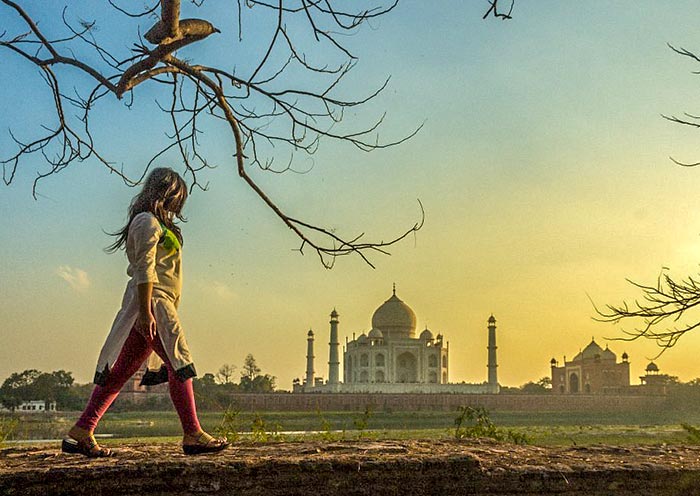
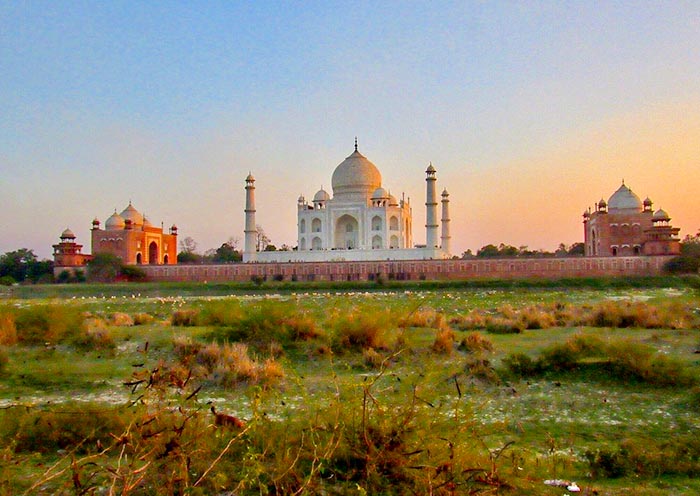
Today will be the big day for the Taj Mahal (World Heritage)! Your knowledgeable guide will pick you up from your hotel in the pre-dawn hours, so you can enjoy a serene sunrise viewing of the Taj Mahal bathed in an ethereal glow, away from the day's heat and crowds.
As you approach the magnificent Taj Mahal, you can admire its immaculate white marble facade glistens in the morning light. This remarkable architectural masterpiece, recognized as one of the New Seven Wonders of the World, serves as an eternal symbol of love. Emperor Shah Jahan built the Taj Mahal in the 17th century as a tribute to his beloved wife, Mumtaz Mahal.
Walking up to the Main Gate of the Taj Mahal is an experience in itself. The gate is carved from red sandstone and adorned with intricate floral patterns. It serves as a grand prelude to the awe-inspiring monument that awaits you. Stepping through, you enter the Charbagh, a formal Mughal garden divided into four perfect quarters by reflecting pools. This symmetry and balance foreshadow the architectural mastery evident in the Tomb itself.
The centerpiece of the Taj Mahal complex is the white marble mausoleum, which houses the cenotaphs of Shah Jahan and Mumtaz Mahal. The story goes that Shah Jahan deliberately built the minarets of the Taj Mahal - towers that serve as vantage points and landmarks - away from and tilted outwards from the main structure. In the unlikely event of a collapse, they would fall away from the Taj Mahal. So the tomb of his beloved wife would remain unharmed. Intricate floral designs, calligraphy, and semi-precious stone inlays that adorn the tomb's surface offer a glimpse into the unparalleled craftsmanship of the era, leaving you breathless with its beauty.
After marveling at the architectural mastery of the Taj Mahal, you will return to your hotel for a refreshing breakfast.
Then, you will continue the journey to Agra Fort (World Heritage). By the way, Shah Jahan was imprisoned in the Agra Fort by his son Aurangzeb. From his vantage point, he is said to have gazed upon the Taj Mahal, which served as a constant reminder of his beloved wife.
Agra Fort is a formidable red sandstone fort built by Emperor Akbar in the 16th century, serving as the seat of Mughal power for nearly a century. Your guide will lead you through the imposing gateways, showcasing the fort's rich history and architectural brilliance. Explore the various palaces, courtyards, and audience halls that once housed emperors, their families, and the Mughal court. Witness the exquisite craftsmanship evident in the intricate carvings, marble inlay work, and jali screens (decorative perforated stonework).
Next, you’ll explore Itmad-ud-Daula's Tomb, also known as the "Baby Taj" which was built by Empress Nur Jahan. This 17th-century mausoleum foreshadows the grandeur of the Taj Mahal with its intricate stone inlay work (perfected later), white marble, and geometric patterns, showcasing the evolving Mughal architectural style. Some might even say that its intricate architectural elements outshine the Taj Mahal!
After the tour, drive back to your hotel in Agra.
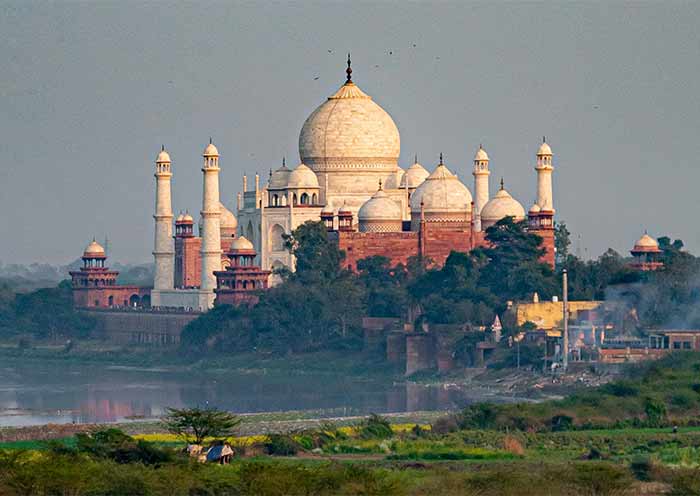
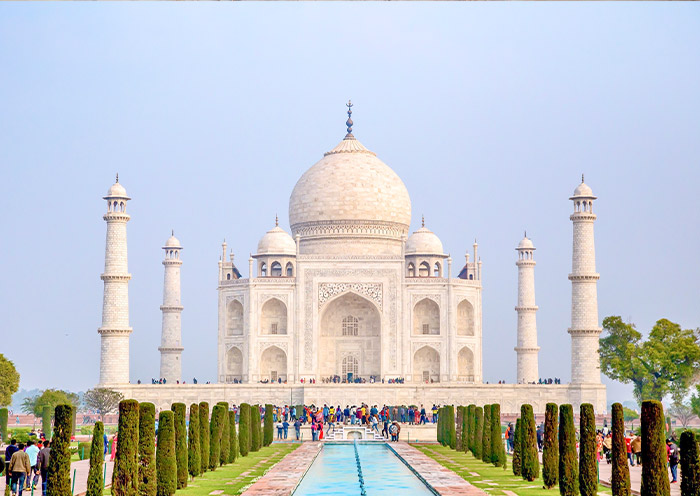

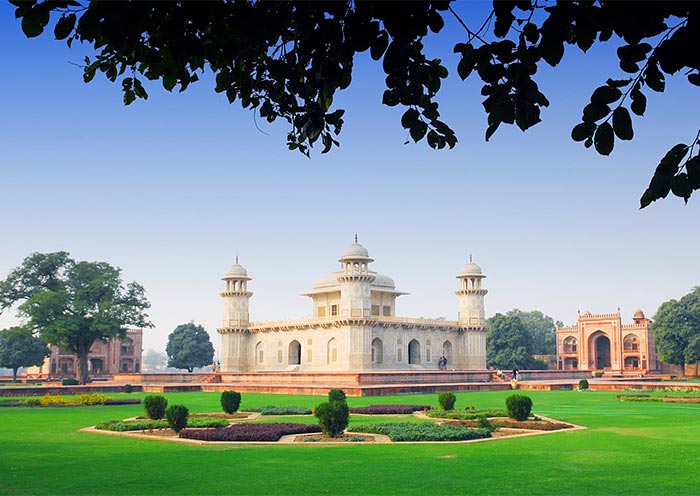
Begin your day early with breakfast at your hotel in Agra. Afterward, you will depart from Agra and make your way to Jaipur via Fatehpur Sikri (World Heritage). The journey covers approximately 250km and takes about 5 hours.
En route to Jaipur, make a stop at Fatehpur Sikri, meaning "The City of Victory”, which is 40 kilometers west of Agra. It served as the capital of the Mughal Empire under Emperor Akbar from 1571 to 1585. Visiting Fatehpur Sikri offers a deep dive into India's rich history, providing insight into the life and times of one of its most celebrated emperors, Akbar the Great. It is a prime example of Akbar's architectural genius, dominated by red sandstone buildings, showcasing a unique blend of Hindu, Jain, and Islamic architectural styles, a reflection of the syncretic culture developed under Akbar’s rule.
The city is divided into two main areas: the royal palace complex and the religious complex. The royal complex includes stunning buildings such as the Diwan-i-Aam (Hall of Public Audience), Diwan-i-Khas (Hall of Private Audience), Jodha Bai's Palace, Birbal's House, and Panch Mahal, among others. The religious compound features the Jama Masjid (Grand Mosque) and the tomb of Salim Chisti, a revered Sufi saint, which draws pilgrims from all over due to its sanctity and the belief in the fulfillment of wishes tied to it. One of Fatehpur Sikri’s most iconic structures is the Buland Darwaza (The Gate of Victory), standing at a height of 55 meters. It was erected by Akbar to commemorate his victory over Gujarat and is a magnificent example of Mughal architecture. The gate serves as the main entrance to the Jama Masjid.
Following the tour, drive on to Jaipur, which is approximately 210 kilometers away, taking around 4 hours from Fatehpur Sikri. Welcome to Jaipur, the vibrant capital of Rajasthan, India, known as the "Pink City" for its trademark building color. Jaipur's most striking feature is the rose-colored hue of its buildings in the old city center. his distinctive color scheme is attributed to a welcoming gesture by Maharaja Ram Singh who had the city painted pink in 1876 to honor a visit by the Prince of Wales (later King Edward VII). Upon reaching Jaipur, check in at your hotel and take some time to unwind.
Optional Activity: Jaipur Local Bazaar Walking Tour with a Guide (USD 40 per person).
You have the option to participate in a Jaipur Local Bazaar walking tour with your tour guide. Jaipur is a fantastic shopping destination, with lots of bazaars showcase wonderful Rajasthan artifacts such as textiles, gemstones, silver, and pottery. One local specialty is blue pottery, which features hand-painted vessels adorned with floral motifs and geometric patterns in combinations of blue, white, and occasionally other colors.
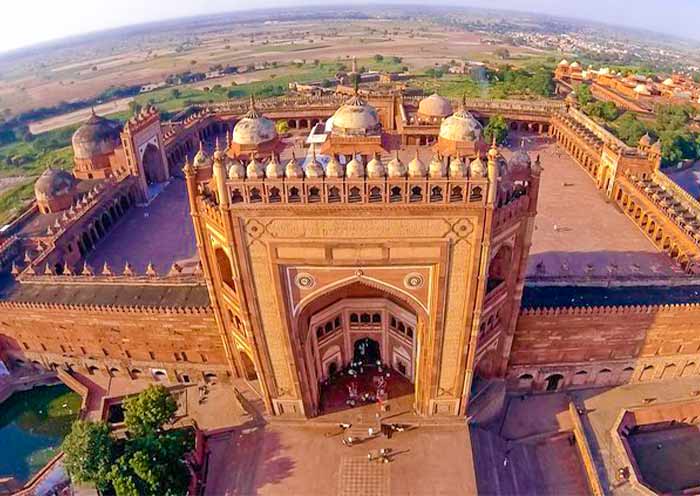
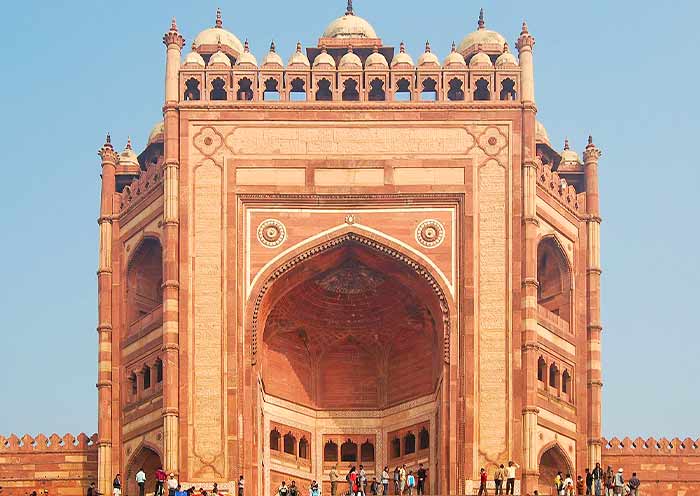

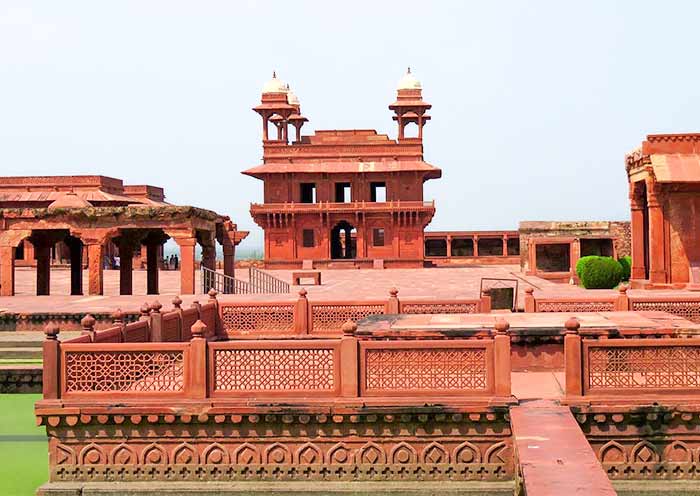
After a delightful breakfast, embark on a full-day Jaipur sightseeing led by your guide, including visits to the magnificent Amber Fort, the City Palace, the Hawa Mahal, and the Jaipur Jantar Mantar.
Your first destination is Amber Fort (World Heritage). The magnificent, formidable, honey-hued fort of Amber is an exquisite example of Rajput architecture. It is located in the rugged hills about 11km northeast of Jaipur, overlooking Maota Lake, and is a must-see sight in the city. Amber was the former capital of Jaipur state. This magnificent fort comprises an extensive palace complex, showcasing a fine blend of Rajput and Mughal architectural styles. It is built from pale yellow and pink sandstone, along with white marble, and features a grand palace, temples, and several ornate gates. Of particular interest is the Sheesh Mahal (Mirror Palace), where the walls are inlaid with exquisite mirrored motifs that dance in the flickering flame of even a single candle.
Tips: You can choose to take a jeep ride (optional) up to the Amber fork rather than take an elephant ride (optional).
You can reach the Amber fort through the Suraj Pol (Sun Gate) which leads to the Jaleb Chowk, the first main courtyard. Diagonally opposite is the Chand Pol (Moon Gate). From Jaleb Chowk, a flight of stairs leads up to the small Siladevi Temple, whose doors feature relief work in silver. The main palace is up next, which includes the Diwan-e-Am (hall for a private audience with the king) with carved columns and latticed galleries, the king’s apartments, the gate Ganesh Pol with beautiful arches, and Jai Mandir or Sheesh Mahal. Stand at one of the many arched windows of the palace and take in the rolling shrubland stretching up to the horizon and the scenic Maota Lake at the foot of the fort.
Next, head to the City Palace, situated in the old city of Jaipur. It is a sprawling complex that blends Rajput and Mughal architecture styles and serves as the royal residence of the Jaipur royal family. The palace houses several buildings, including Chandra Mahal, the Armoury, Diwan-i-Khas, and Diwan-i-Am Art Gallery, along with courtyards and gardens. Among them, Pitam Niwas Chowk (Courtyard of Love) is a photographer's delight. It is famous for its 4 colored gates, each representing a different season. The Peacock Gate depicts autumn, the Lotus Gate signifies summer, the Green Gate represents spring, and finally, the Rose Gate embodies winter.
No tour would be complete without visiting Hawa Mahal (Palace of Winds). It is renowned for its unique 5-story exterior, resembling the honeycomb of a beehive. This architectural wonder is built of red and pink sandstone, and features an incredible 953 intricately carved windows. These windows, resembling a honeycomb design, gave the building its name ("hawa" meaning "wind" in Hindi) and allowed royal ladies to observe everyday life and festivals in the street below without being seen. The clever design also facilitate the circulation of cool breezes throughout the palace, providing natural air conditioning, especially during the hot summer months. Hawa Mahal is an architectural marvel that blends Hindu Rajput architecture with Islamic Mughal architecture. The facade of Hawa Mahal is a stunning sight, particularly when bathed in the golden light of the early morning or late afternoon.
Immediately behind the Hawa Mahal is the Jaipur Jantar Mantar (World Heritage), considered one of the oldest astronomical observatories in the world, built by Maharaja Sawai Jai Singh II. The observatory houses the world's largest stone sundial and features 16 devices designated to measure time, observe planetary motion around the sun, and keep track of celestial bodies. The geometric devices of the observatory are both functional and architecturally fascinating, offering a glimpse into the advanced astronomy studies of the 18th century.
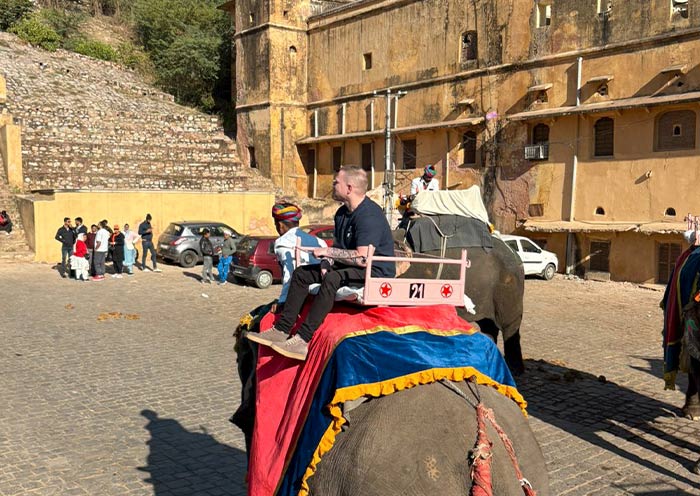
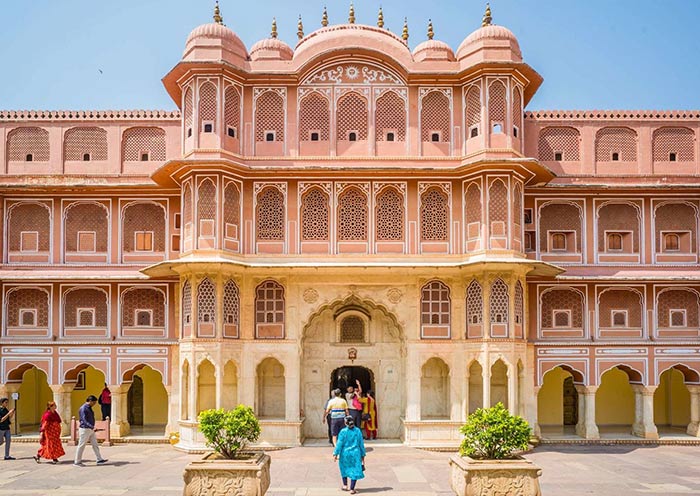
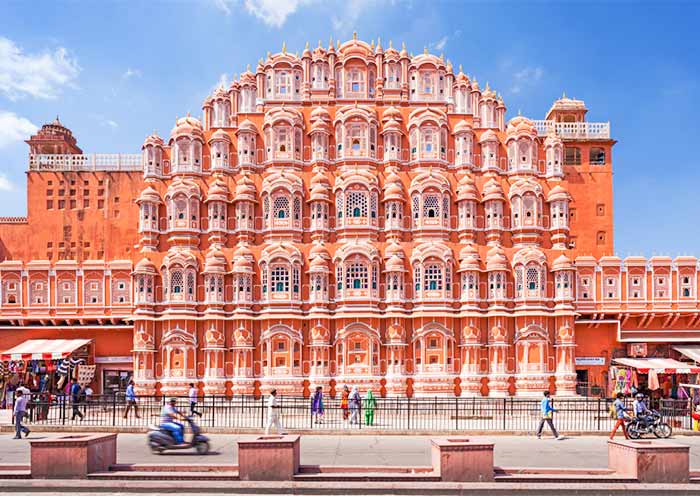

Begin your day early with breakfast at your hotel in Jaipur. Today we will depart from Agra and make our way to Udaipur. The journey covers approximately 339km and takes about 7 hours.
Welcome to Udaipur, “the most romantic spot on the continent of India ”! Udaipur has a romance of setting unmatched in Rajasthan and arguably in all of India, nestled in the mighty Aravalli range, with shimmering lakes visible from almost every rooftop, fairytale palaces, sprawling havelis, revered temples, and narrow lanes weaving through colorful markets add the human counterpoint to the city. Udaipur also referred to as the "Venice of the East" or the "City of Lake" is renowned for its numerous lakes - precisely seven in number, with Lake Pichola being the largest.
Once you arrive, check into the hotel. After freshening up, take an evening walk around the local market. Stay overnight at the hotel.
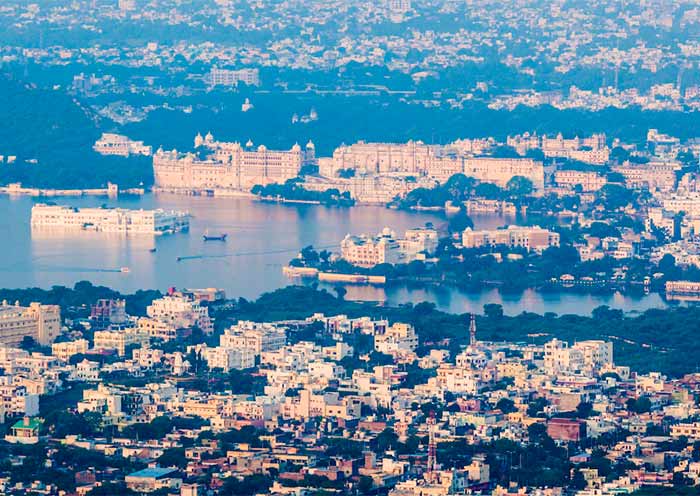
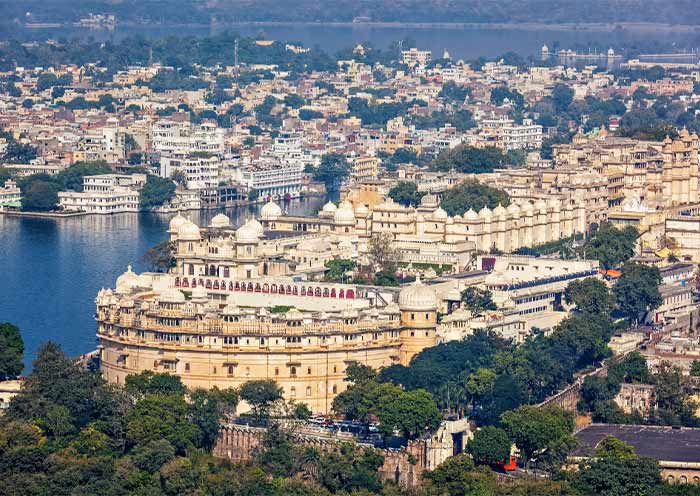
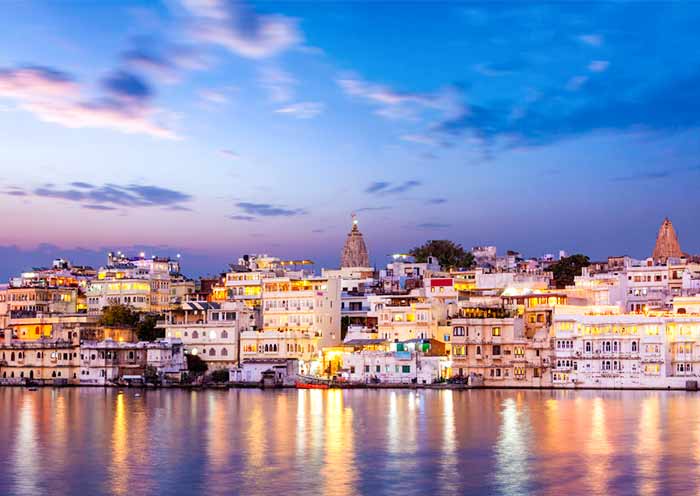
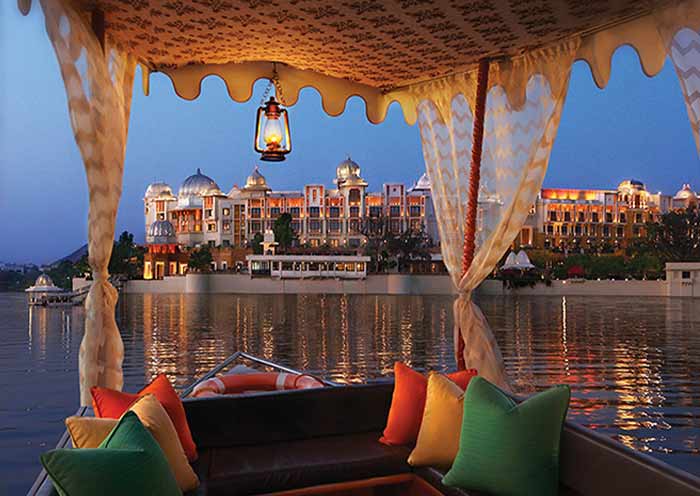
Start your day with a delightful breakfast, and prepare to explore the city's most iconic sights. Visit the Jagdish Temple, and the City Palace, and take a boat ride on Lake Pichola. Don't forget to enjoy the views of the Monsoon Palace.
Your first destination is the Jagdish Temple. This Indo-Aryan temple was built by Maharana Jagat Singh, who ruled Udaipur between 1628 and 1653. Known as the largest temple in Udaipur, this three-story structure is dedicated to Lord Vishnu and is adorned with carved pillars, decorated ceilings, and painted walls. Upon entering, a meticulously carved archway greets you, featuring intricate sculptures of elephants, horses, and various other animals. The main shrine houses a figurine of the four-armed Lord Vishnu, carved out of a single black stone. The temple's spire or, standing around 80 feet high, dominates Udaipur's skyline. The main shrine is surrounded by four smaller shrines dedicated to Lord Ganesha, the Sun God, Goddess Shakti, and Lord Shiva. An elegant marble staircase of 32 steps leads you up to the main shrine, where a notable brass representation of Garuda, the half-human, half-eagle protector of Lord Vishnu, stands guard. With its rich history and architectural brilliance, the Jagdish Temple is sure to leave an indelible mark on any visitor.
Continue your journey to the City Palace, located just 150 meters from the Jagdish Temple. Perched majestically on the banks of Lake Pichola, the City Palace is Rajasthan’s largest palace, and has 11 smaller palaces, with a facade 244m long and 30.4m high initiated by Maharana Udai Singh II. It is an architectural marvel and represents an exquisite blend of Rajasthani, Mughal, European, and oriental architectural styles. All the palaces were built with marble and granite and its walls and towers, painted in a soft shade of cream and white, stand out against the vibrant blue of the lake, earning Udaipur the nickname "The White City." The palace was built atop a hill, with many balconies offering a panoramic view of the city and its surroundings.
Enter through the Badi Pol (Great Gate), leading you to the Tripolia Gate, where kings were weighed against gold and silver, which was then distributed to the poor. Inside, the palace complex is a maze of courtyards, pavilions, terraces, corridors, rooms, and hanging gardens, each more splendid than the last. The main part of the City Palace is open as the City Palace Museum, with rooms extravagantly decorated with mirrors, tiles, and paintings, and housing a large and varied collection of artifacts. Noteworthy areas include the Baadi Mahal, a pretty central garden that gives fine views over the city; the Mor Chowk (Peacock Courtyard ), known for its stunning glass mosaics of peacocks; the Manak Mahal (Ruby Palace) for its collection of crystal and porcelain figurines; and the Zenana Mahal, which once housed the royal ladies and now contains a long picture gallery with lots of royal hunting scenes.
No visit to Udaipur is complete without a boat ride on the tranquil waters of Lake Pichola. This artificial freshwater lake, created in the 14th century, is now 4km long and 3km wide, and is surrounded by magnificent hills, palaces, temples, and bathing ghats. A boat ride (about 45 mins ) here offers a serene experience and a different perspective of the city's palatial beauty, including splendid views of the City Palace stretching along the east bank, the picturesque island palaces of Jag Mandir and Jag Niwas (Lake Palace), and the bustling ghats.
The final highlight of your day should be a visit to the Sajjan Garh Palace, also known as the Monsoon Palace. Perched on a hilltop, and overlooking the Fateh Sagar lake, this white palace seems just like a fairy-tale castle, one which holds within its walls memories of kings and queens. It offers unparalleled views of Udaipur and its surrounding lakes against the backdrop of the setting sun. Originally intended as an astronomical center to watch the monsoon clouds, it now serves as a vantage point for tourists seeking breathtaking views. The drive to the palace is equally enchanting, winding through the Sajjangarh Wildlife Sanctuary, home to a variety of flora and fauna, where you might spot wild animals like chital, sambar, wild boar, and blue bull.
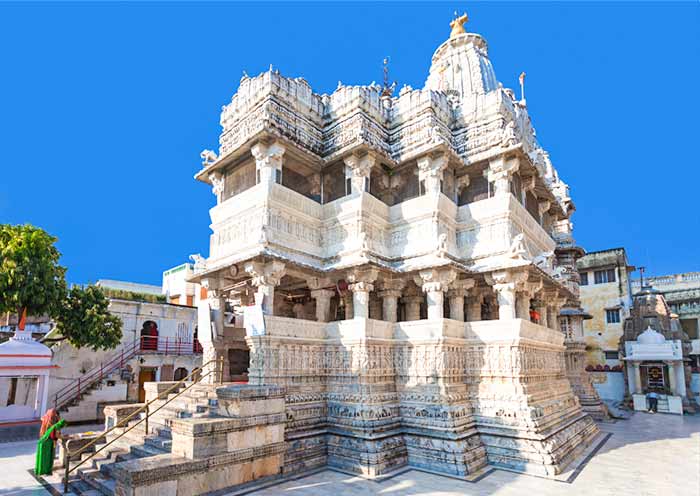
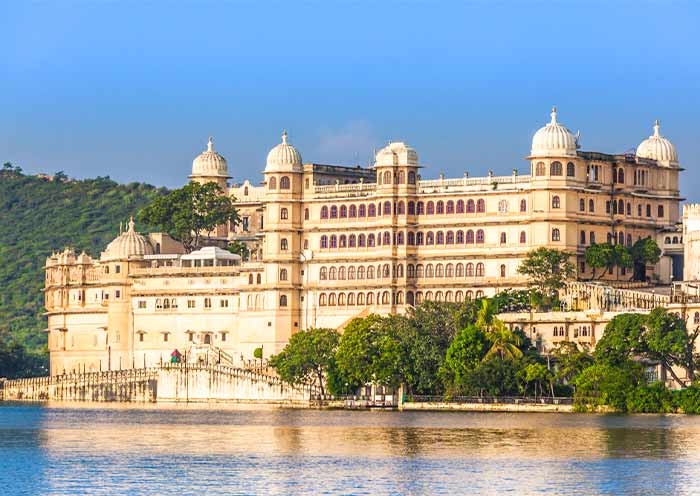

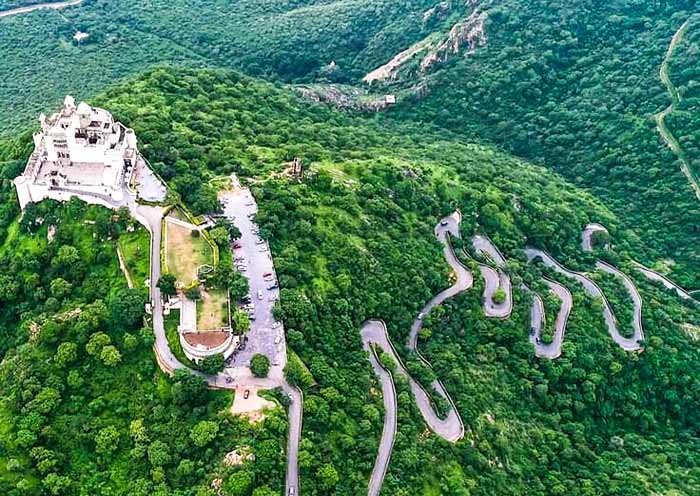
Today, you will fly from Udaipur to Delhi, a journey of approximately 1 hour and 20 minutes. Upon arrival at Indira Gandhi International Airport (IGI Airport), you will take your flight to Kathmandu.
Namaste! Welcome to Kathmandu, the capital of Nepal! Upon your arrival at the airport in Nepal, the tour guide and driver will meet you at the exit and then escort you to the hotel in downtown Kathmandu. You can have a good rest in your hotel and get ready to explore Kathmandu Valley with your guide the next day.
Kathmandu is the largest city in Nepal, located in the Kathmandu Valley, which is surrounded by the majestic Himalayan mountain range. The city boasts a rich cultural and historical heritage, with numerous ancient temples, palaces, and monuments. Its architecture beautifully blends traditional Newari style with modern designs. Kathmandu is renowned for its vibrant street life and bustling markets, such as the Asan Bazaar and the Thamel district (street), offering a wide range of goods and services. The city's rich festival culture, stunning architecture, and friendly people make it a popular destination for travelers from around the world.

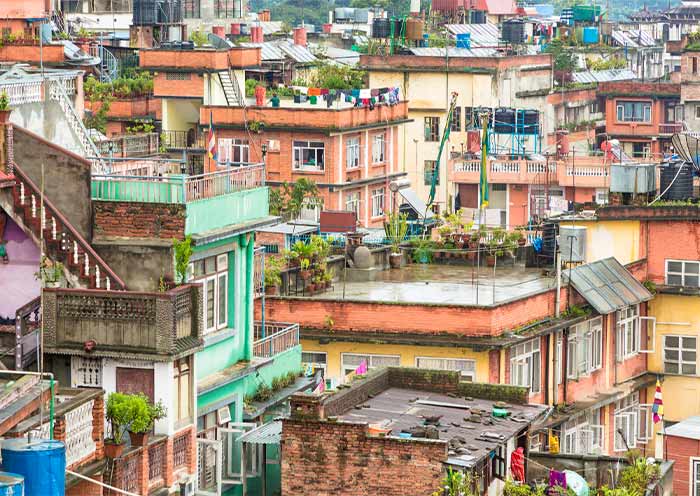
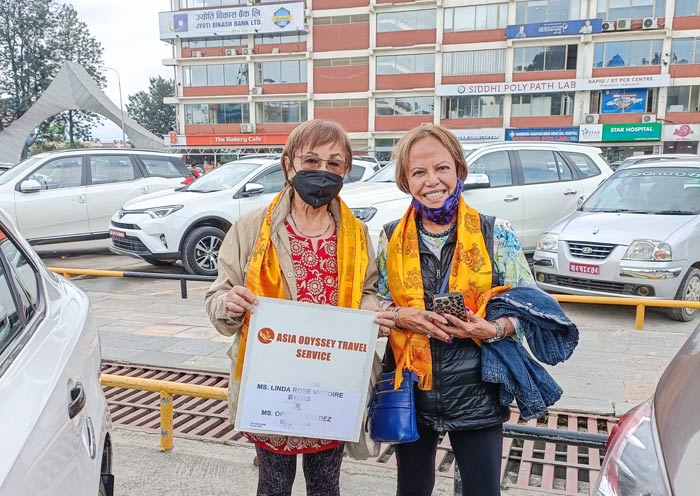
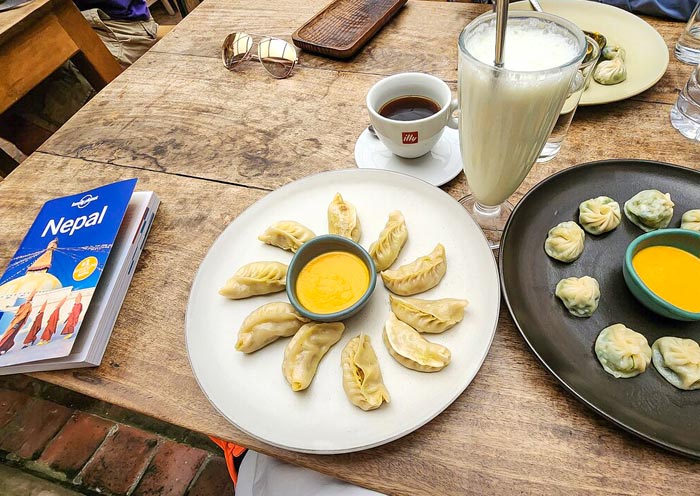
Today, you will explore 3 World Heritage Sites in Kathmandu and Patan. Begin by visiting Kathmandu Durbar Square (World Heritage), one of three royal palace squares in the Kathmandu Valley. You won't miss the Hanuman Dhoka, an iconic red palace adorned with intricate wooden carvings, which served as the residence of Malla Kings for centuries. Most of our guests arm to visit Kumari Ghar (House of the Living Goddess) and Taleju Temple (closely linked to the tradition of the Kumari). Through the Kumari Chowk, you may have the opportunity to catch a glimpse of the Kumari (a young girl worshiped as the living goddess Durga), who is revered by both Hindus and Buddhists in Nepal. The Kumari is selected from a Buddhist family through traditional tests and is believed to be the incarnation of the Goddess Taleju (Durga) until she reaches menstruation age. Dashain Festival (October; a 15-day festival) and Tihar Festival (November; Festival of Lights) offer the best chances of seeing the Kumari in public processions. The Bhairav Statue is also one of the best spots to experience Hindu culture, where you can witness local people worshipping the fearsome god Bhairav, the protector of the city.
Then, move on to Swayambhunath Temple (Stupa), also known as the Monkey Temple due to the swarms of monkeys that inhabit the area. Located on a hilltop on the western edge of Kathmandu, Swayambhunath Stupa (World Heritage) is visible from a distance. You can climb the steep stairs to reach the top of the hill, where you can enjoy panoramic views of Kathmandu Valley and even the Himalayas on clear days. As a must-visit destination in Kathmandu, the stupa is believed to have been built over 2,500 years ago, making it one of the oldest Buddhist sites in the world. The base of the stupa is surrounded by colorful prayer flags fluttering in the wind, carrying prayers and blessings to the heavens. It is a sacred pilgrimage site for both Hindus and Buddhists, signifying the coexistence of diverse beliefs in Nepal while showcasing Newari artistic heritage. Take your time to indulge in the temple's serene and spiritual ambiance, basking in its captivating architecture and embracing its natural beauty.
After that, head to visit Patan Durbar Square (World Heritage), which is 5km away, about a 0.5-hour drive. Located in Patan (Lalitpur), this square is renowned for its ancient architectural masterpieces, including dozens of Buddhist and Hindu temples, pagodas, stone, and wood carvings. Like Kathmandu Durbar Square and Bhaktapur Durbar Square, Patan Durbar Square served as the Royal Palace of the Malla Kings before Prithivi Narayan Shah conquered the Three Malla Kingdoms of Kathmandu, Patan, and Bhaktapur in 1769 and consolidated them to found the modern state of Nepal. He also established the capital of Nepal in Kathmandu. Patan is believed to have been established around 2,300 years ago and is the oldest of the three cities that make up the Kathmandu valley. It is a dazzling display of Newari architecture such as Krishna Mandir (21 golden spires and exquisite stonework), Golden Gate (ornate golden doorway), Sundari Chowk (enchanting courtyard).
Optional Morning Activity:
Mountain Scenic Flight: Take a scenic mountain flight at 6:30 AM from Tribhuvan International Airport to see the fantastic Himalayan peaks (Mount Everest is 20 miles from your window), lakes and glaciers. The flight lasting around one hour. After your flight, we would take you back to the hotel for breakfast.
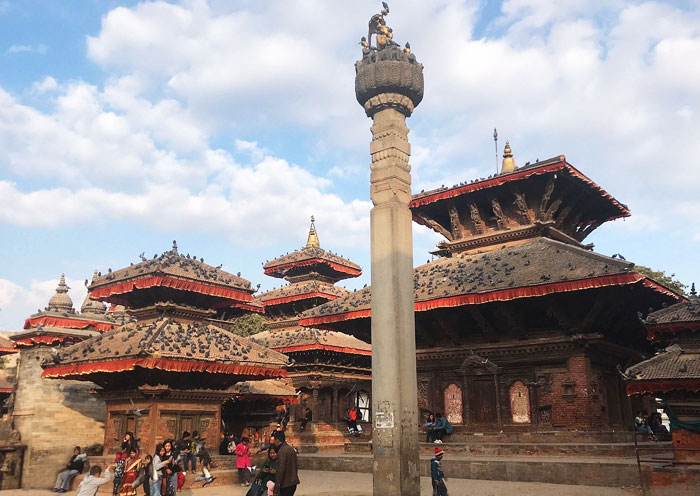
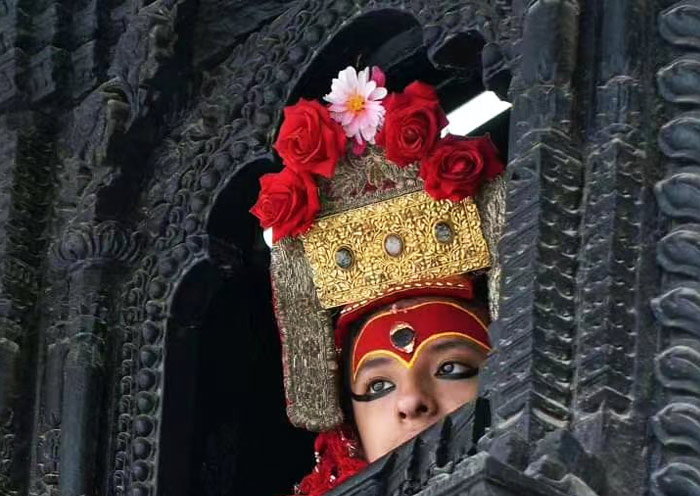


In the morning, you will visit the Pashupatinath Temple (World Heritage) - a stunning pagoda-style Hindu temple dedicated to Lord Shiva. As the oldest Hindu temple in Nepal, dating back to around 400 B.C., the main temple complex located at the Bagmati River is only open to Hindus. However, non-Hindus can observe the temple from the terraces on the east side of the river. Pashupatinath is often regarded as the Nepal equivalent of Varanasi in India. Originating in the Himalayan Mountains, the Bagmati River is believed to possess purifying qualities for the soul and holds immense sacred significance for both Hindus and Buddhists. Along the banks, there are platforms dedicated to cremation rites. For generations, families have brought the bodies of their loved ones who have passed away to the river, washing their feet and sprinkling drops of water on their faces. It is believed that the river washes away a person's sins and facilitates their journey to heaven. The bodies are then cremated along the riverbanks, and the ashes are scattered into the water. This is the most profound scene at Pashupatinath, evoking endless contemplation on life and death. From across the river, you will notice numerous hermit caves to the north of the cremation platforms. For centuries, hermits and ascetics have been meditating in these caves, and this practice continues to this day.
Next, you will head to Bodhnath which is a focal point for Tibetan Buddhism in Nepal and home to Boudhanath Stupa (one of the largest Buddhist stupas in the world). You can join the Tibetan pilgrims, and walk around the Boudhanath Stupa (World Heritage) clockwise, turning the prayer wheels under the protective gaze of Buddha's eyes. This is a way to show respect for the Buddha and to accumulate merit. The Boudhanath Stupa is 36 meters tall and 108 meters in diameter, designed as a mandala to represent the Buddhist cosmos. The structure is dominated by a massive dome, at the top of which sits a square tower adorned with the omnipresent eyes of Buddha, gazing serenely in the four cardinal directions. These eyes symbolize the omniscience of Buddha, offering protection and wisdom to all who seek refuge. Surrounding the stupa, prayer flags flutter in the wind, carrying mantras and prayers for peace, compassion, strength, and wisdom far and wide. In the evening, thousands of butter lamps illuminate the plaza surrounding the stupa. Equally fascinating are the surrounding streets, lined with Tibetan monasteries and shops selling religious art, Tibetan handicrafts, and traditional Nepali items.
After lunch, you will embark on a picturesque journey to Nagarkot (30km, 1.5 hrs), winding your way through quaint rivers, charming towns, and verdant farmlands. As Nagarkot draws near, the drive ascends, navigating through sharp curves and enveloped by lush, verdant forests.
For those with a penchant for capturing the beauty of sunsets, the enchanting town of Nagarkot is a dream destination. Nagarkot has a reputation as the top spot for enjoying Himalayan views from the comfort of your hotel balcony. Sitting at an elevation of around 2,175 meters (7,136 feet), the village is packed with hotels lining a ridge, affording one of the broadest possible views of the Himalayas with eight ranges visible: Dhaulagiri(8167m), Mt Everest (8848m), Kanchenjunga (8586m) Ganesh Himal (7406m), Langtang Lirung (7227m), Shisha Pangma (8012m), Dorje Lakpa (6966m) and Gauri Shankar (7134m). Tips: The best viewing seasons are October to December and March to April when clear skies are likely.
Upon reaching Nagarkot, proceed towards the lookout tower which is about 65 steps from the parking from where you can witness some majestic panorama of the world's tallest mountains. Observe the setting sun as it slowly behind the mountains, painting all the Himalayas in golden brown. Nagarkot itself is abundant with deep forests, small meadows, and fresh wind blowing straight from the far Himalayas. After enjoying the view, check into your comfortable hotel in Nagarkot and get a good rest to prepare for witnessing the first light of day illuminating the peaks tomorrow.
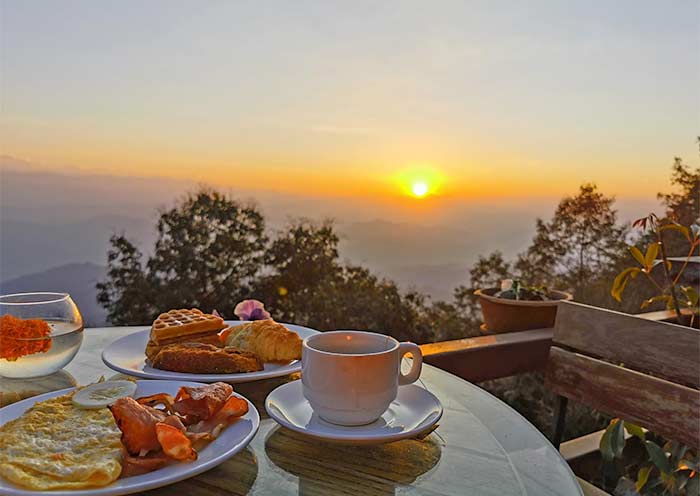
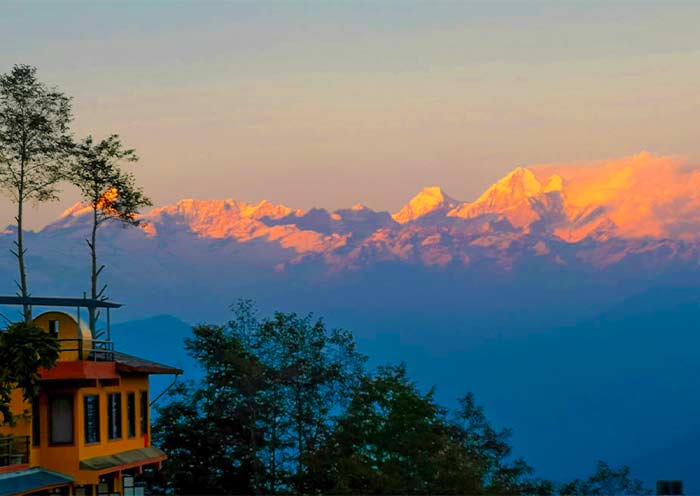

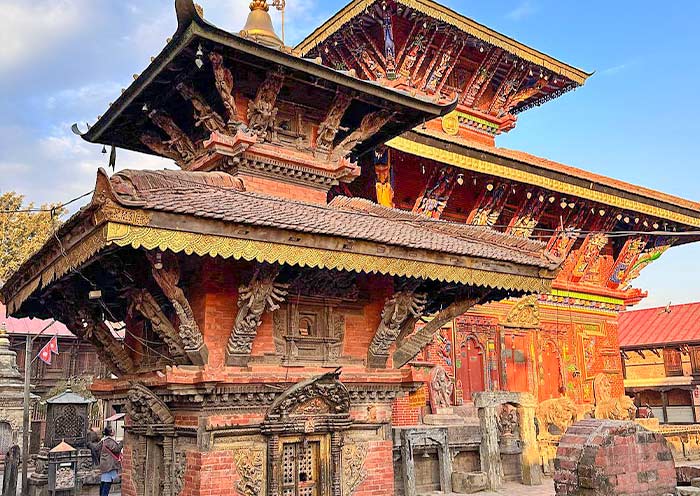
It is time to end your 12-day India Nepal tour. You will have some free time in Kathmandu and explore more on your own till your guide escorts you to the airport for your flight to your next destination
Thank you for choosing Asia Odyssey Travel (AOT) for your Nepal tour, we are always here working for you and hope to see you again for your next trip to Asia. Safe journey!
Note:
Please note that some of the sites mentioned in the itinerary may be subject to change based on factors such as the season, weather conditions, national holidays, and special events. We reserve the right to modify the itinerary to ensure an enhanced tour experience in Nepal

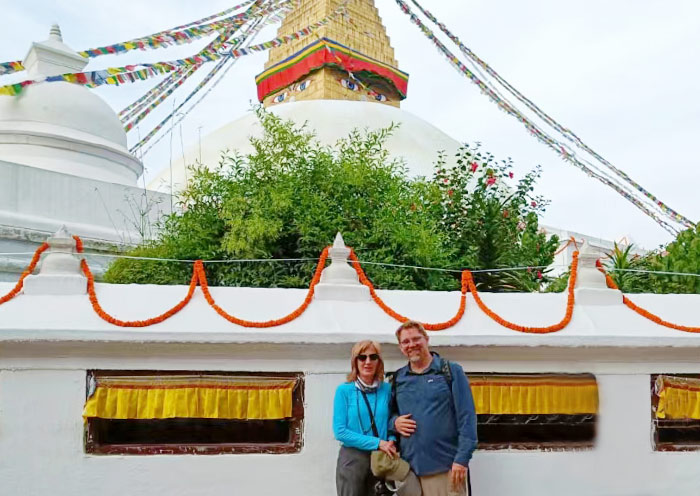
Price: What’s Included & What’s Excluded
What’s Included?
What’s Excluded?
Important Trip Notes for Booking a Private Tibet Tour
All foreign travelers are advised to make their bookings at least one week in advance and send the necessary documents to us for obtaining the permits. However, if you plan to visit Mount Kailash, it is recommended to book at least two weeks in advance, as it may take longer to obtain the necessary permits.
Accommodation & Hotel Condition for Your Tibet Tour
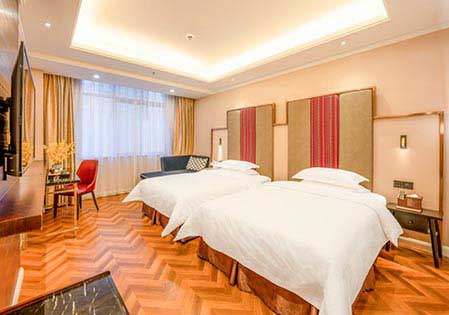
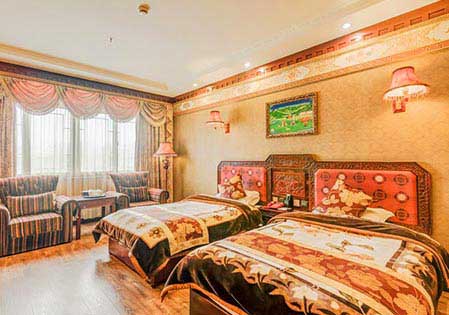
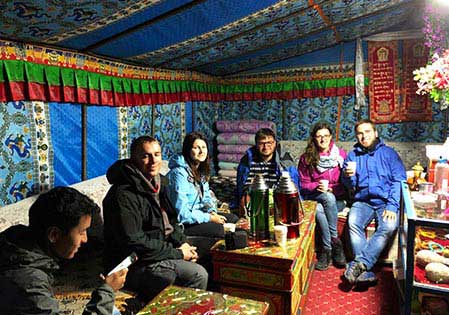
Have a good sleep everyday is very important during your China tour. In a private tour, you can decide on your own which hotel class you want - luxury 5 star, comfortable 4-star or economic 3-star.
All the hotels in each destination we selected are at good location, close to commercial street or tourist attractions. And, all the hotels we use have a business relationship for many years and they have windows, air-conditioners, hot water, showers, wifi... (except for basic accommodation condition when travel to Mount Everest) to ensure you luxury and comfortable sleep experience. The staff can speak English and they will provide you the high quality service. If you have any requirements, you can ask them to help.
Photo Gallery for This Itinerary
Latest Himalaya Tours Reviews from Our Customers

cindy heng
Malaysia
Date of Experience: Sep 07, 2025
Tour Customized by: Abby
You May be Interested in This Tour: Customized Tour

mui m
Vietnam
Highly recommend Asia Odyssey - they planned a fantastic itinerary against our brief for Tibet, Nepal, and Bhutan. Special shoutout to Ms. Mandy who planned our trip, answered all our questions, was incredibly responsive, and was always helpful. She checked in during our trip to make sure we were okay as well. On our trip, our local guides were knowledgeable and kind and our accommodation was comfortable. All-in-all a fantastic experience and highly recommended.
Thank you for a wonderful experience!!
Destination(s): Tibet
Date of Experience: Jun 05, 2025
Tour Customized by: Mandy
You May be Interested in This Tour: Customized Tour

Bhawani Thangaratnam
Malaysia
Date of Experience: Aug 31, 2025
Tour Customized by: Steven
You May be Interested in This Tour: Customized Tour
Price: Request
(Based on a private tour for two people. Price varies depending on program, travel date, number of people.)
Free Enquiry! You don’t need to pay for the reservation.
- United States (+1)
- Australia (+61)
- Singapore (+65)
- Malaysia (+60)
- Philippines (+63)
- Canada (+1)
- Italy (+39)
- Indonesia (+62)
- United Kingdom (+44)
- Spain (+34)
- Mexico (+52)
- Hong Kong (+852)
- Thailand (+66)
- United Arab Emirates (+971)
- New Zealand (+64)
- South Africa (+27)
- Germany (+49)
- Brazil (+55)
- India (+91)
- France (+33)
- Vietnam (+84)
- The Netherlands (+31)
- Saudi Arabia (+966)
- Ireland (+353)
- Argentina (+54)
- Switzerland (+41)
- Romania (+40)
- Pakistan (+92)
- Japan (+81)
- Portugal (+351)
- Bangladesh (+880)
- South Korea (+82)
- Puerto Rico (+1)
- Türkiye (+90)
- China (+86)
- Belgium (+32)
- Qatar (+974)
- Greece (+30)
- Taiwan (+886)
- Austria (+43)
- Poland (+48)
- Israel (+972)
- Chile (+56)
- Sri Lanka (+94)
- Nigeria (+234)
- Peru (+51)
- Colombia (+57)
- Hungary (+36)
- Nepal (+977)
- Denmark (+45)
- Bulgaria (+359)
- Norway (+47)
- Slovenia (+383)
- Sweden (+46)
- Kuwait (+965)
- Costa Rica (+506)
- Ecuador (+593)
- Venezuela (+58)
- Malta (+356)
- Croatia (+385)
- Tunisia (+216)
- Czechia (+420)
- Mongolia (+976)
- Bahrain (+973)
- Mauritius (+230)
- Papua New Guinea (+675)
- Cambodia (+855)
- Dominican Republic (+1)
- Luxembourg (+352)
- Finland (+358)
- Guatemala (+502)
- Myanmar (+95)
- Maldives (+960)
- Slovakia (+421)
- Laos (+856)
- Serbia (+381)
- Brunei (+673)
- Oman (+968)
- Macao (+853)
- Panama (+507)
- Morocco (+212)
- Jordan (+962)
- Georgia (+995)
- Fiji (+679)
- Bolivia (+591)
- Lithuania (+370)
- Bahamas (+1)
- Cyprus (+357)
- Latvia (+371)
- Bhutan (+975)
- Iraq (+964)
- Iran (+98)
- Kenya (+254)
- Jamaica (+1)
- Zimbabwe (+263)
- Azerbaijan (+994)
- Uruguay (+598)
- Estonia (+372)
- Andorra (+376)
- Cameroon (+237)
- Ghana (+233)
- Kazakhstan (+7)
- Nicaragua (+505)
- Egypt (+20)
- Russia (+7)
- Albania (+355)
- Réunion (+262)
- Montenegro (+382)
- Algeria (+213)
- Afghanistan (+93)
- Martinique (+596)
- Uganda (+256)
- Honduras (+504)
- North Macedonia (+389)
- Trinidad and Tobago (+1)
- Suriname (+597)
- Antigua and Barbuda (+1)
- Zambia (+260)
- Ukraine (+380)
- Armenia (+374)
- Barbados (+1)
- Belarus (+375)
- Palestine (+970)
- Lesotho (+266)
- Moldova (+373)
- Ethiopia (+251)
- French Polynesia (+689)
- Gambia (+220)
- Guam (+1)
- Gibraltar (+350)
- Isle of Man (+44)
- New Caledonia (+687)
- El Salvador (+503)
- Comoros (+269)
- Seychelles (+248)
- Chad (+235)
- Samoa (+685)
- Cook Islands (+682)
- Palau (+680)
- Paraguay (+595)
- DR Congo (+243)
- Solomon Islands (+677)

